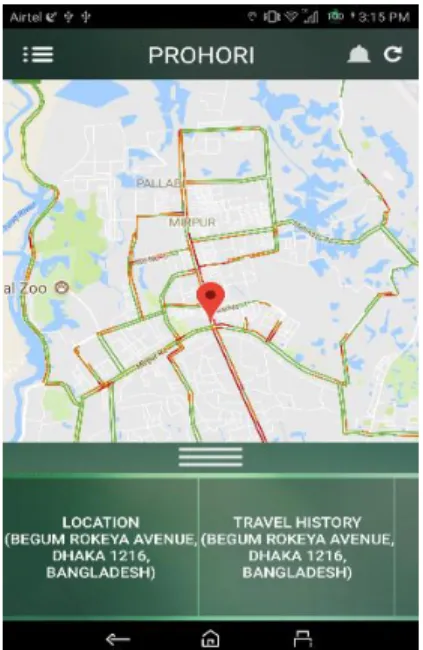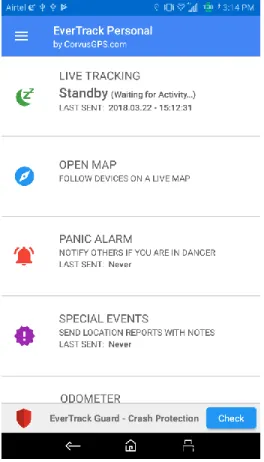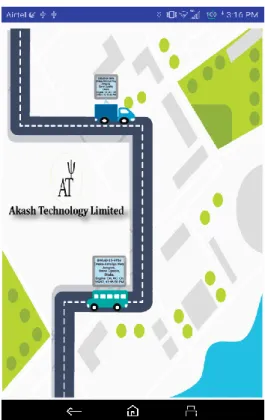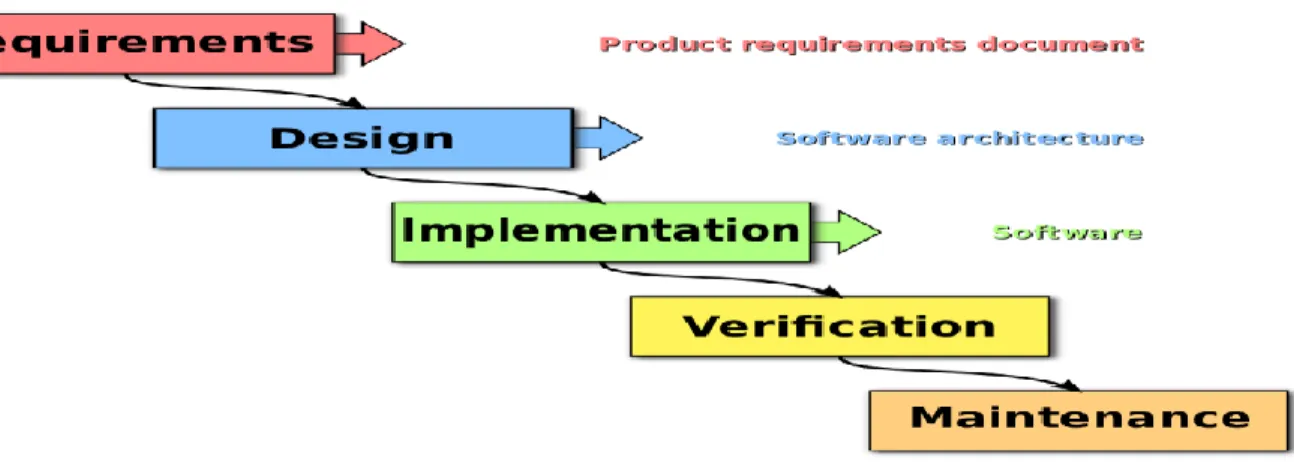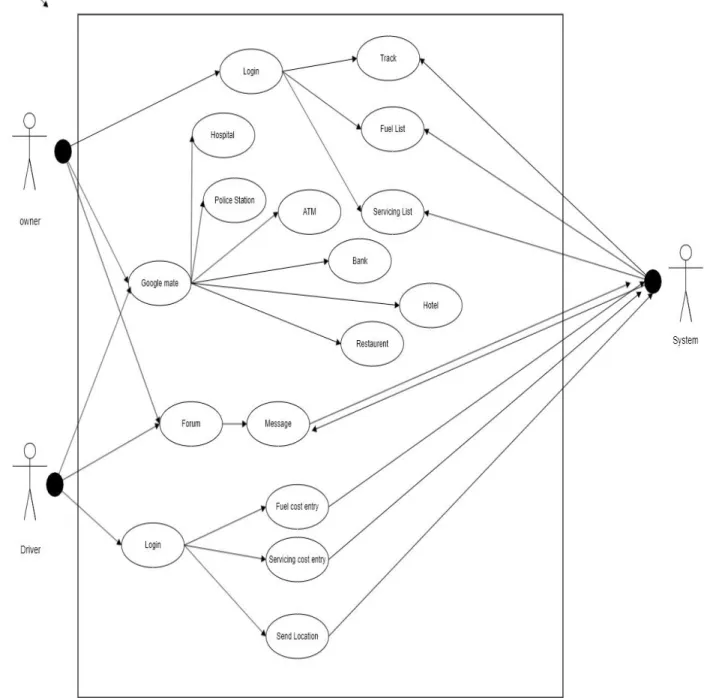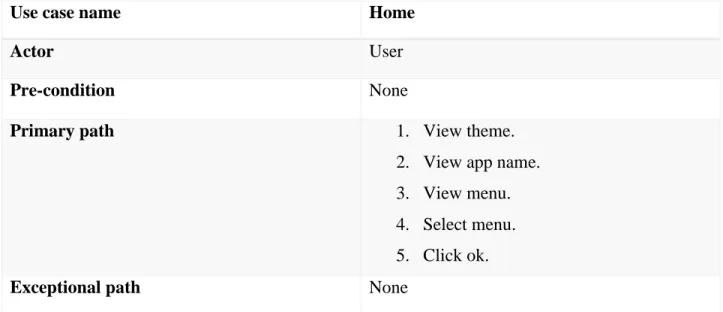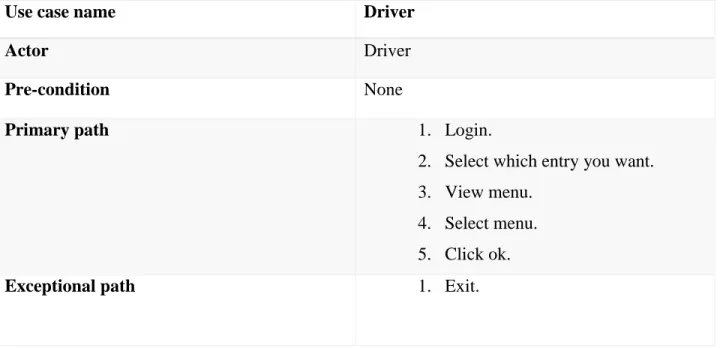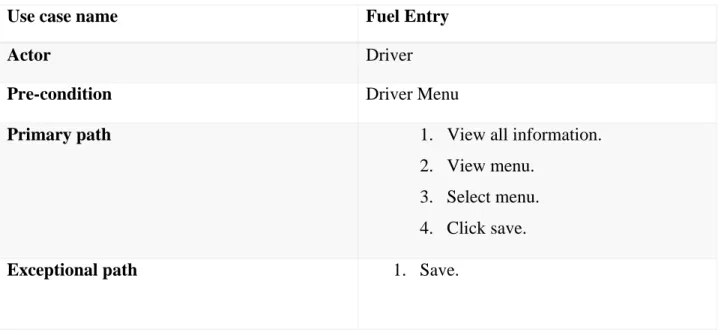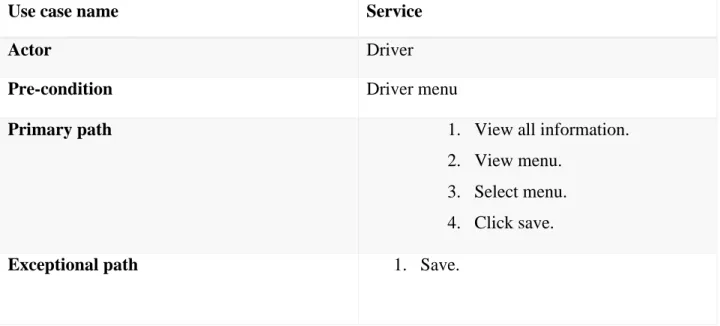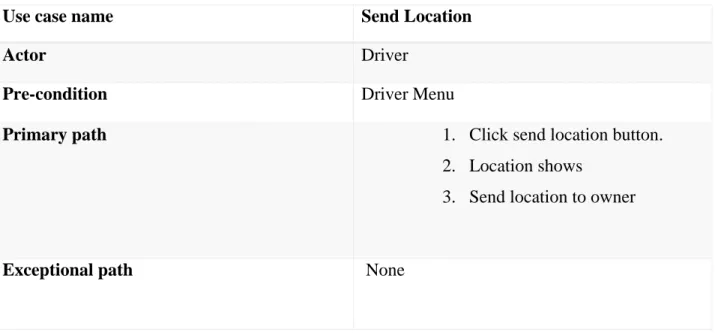ANDROID-BASED VEHICLE TRACKING MANAGEMENT
By
Mohammad Mohi Uddin
ID: 141-15-3205
This Report Presented in Partial Fulfillment of the Requirements for the Degree of Bachelor of Science in Computer Science and Engineering.
Supervised By Most. Hasna Hena
Senior Lecturer Department of CSE Daffodil International University
Co-Supervised By Rezwana Sultana
Lecturer Department of CSE Daffodil International University
DAFFODIL INTERNATIONAL UNIVERSITY Dhaka, Bangladesh
MAY 2018
©Daffodil International University ii
©Daffodil International University iii
©Daffodil International University iv
ACKNOWLEDGEMENTS
First, I express my heartiest thanks and gratefulness to almighty God for His divine blessing makes me possible to complete the final year project/internship successfully.
I am really grateful and wish my profound my indebtedness to Most. Hasna Hena, Senior Lecturer, Department of CSE Daffodil International University, Dhaka. Deep Knowledge & keen interest of my supervisor in the field of “Android” to carry out this project. Her endless patience, scholarly guidance, continual encouragement, constant and energetic supervision, constructive criticism, valuable advice, reading many inferior draft and correcting them at all stage have made it possible to complete this project.
I would like to express my heartiest gratitude to Most. Hasna Hena, Rezwana Sultana, and Head, Department of CSE, for his kind help to finish my project and also to other faculty member and the staff of CSE department of Daffodil International University.
I would like to thank my entire course mate in Daffodil International University, who took part in this discuss while completing the course work.
Finally, I must acknowledge with due respect the constant support and patients of my parents.
©Daffodil International University v
ABSTRACT
This project represents a system where a user can track vehicles on an online map through an Application. It also allows the user to track and check vehicle fuel cost entries, servicing cost information. This system helps admin to keep track of the driver so that driver can’t do any type of cheating. It also helps the admin to communicate with the driver and can keep the total cost of any vehicle individually.
Using this application, an owner can get fuel, services cost related all information of his vehicle.
Also, driver can get the location via google mate and they can search for different types of places like hospital, police station, bank, hotel. Restaurant and ATM for any emergency situation. Drivers and owner also can communicate with each other via comment or post. The most significant features of the proposed system are its accuracy of positioning, easy operation by the user at any location, and easy management.
©Daffodil International University vi
TABLE OF CONTENTS
CONTENTS PAGE
Board of examiners ii
Declaration iii
Acknowledgements iv
Abstract v
Table of contents
vi-vii List of figures
viii-ix List of tables
ix
CHAPTER 1: INTRODUCTION
1.1 Introduction 1
1.2 Motivation 1
1.3 Objectives 2
1.4 Expected Outcome 2
1.5 Report Layout 2-3
CHAPTER 2: BACKGROUND
2.1 Introduction 4 2.2 Related Works 4-6 2.3 Comparative Studies 6 2.4 Scope of the Problem
7
2.5 Challenges 7
©Daffodil International University vii
CONTENTS PAGE
CHAPTER 3: REQUIRMENT SPECIFICATION
3.1 Business process modeling 8-10 3.2 The requirement collection and analysis
11-12 3.3 Use case model of the project and their description
13-19
CHAPTER 4: ANALYSIS AND DESIGN
4.1 GUI and Interaction model 20-27 4.2 Back End Design & Implementation 27-29
CHAPTER 5: IMPLEMENTATION AND TESTING
5.1 Using Android Platform 30
5.2 Implementation of Using Android Platform 31-33 5.3 Integration and Testing Implementation
33-34
CHAPTER 6: CONCLUSION AND FUTURE SCOPE
6.1 Conclusion 35
6.2 Limitation 35 6.3 Future Scope
35
REFERENCES 36
©Daffodil International University viii
LIST OF FIGURES
FIGURES PAGE
Figure 2.1: Phohori 4 Figure 2.2: Ever Track 5
Figure 2.3: Track Me BD 6
Figure: 3.1: Process of business modeling 8
Figure 3.2: Waterfall Model 9
Figure 3.3: Use Case Model for User 13
Figure 4.1: GUI of Home Page. 20
Figure 4.2: Main Feature GUI of Home Page.
Figure 4.3: Login page(Owner) Figure 4.4: Registration page Figure 4.5: Owner Menu
Figure 4.6: Location List Figure 4.7: Servicing Information Figure 4.8: Fuel Information
Figure 4.9: Login page (Driver) Figure 4.10: Driver Menu Figure 4.11: Fuel Cost Entry Figure 4.12: Servicing Cost Entry
Figure 4.13: Send Location
21 22 22 22 23 23 23 24 24 25 25 25
Figure 4.14: Google Mate main page 26
Figure 4.15: Selecting Location and Search for Hospital Figure 4.16: Search Result with location for hospital
Figure 4.17: Map Type (Road Map) Figure 4.18: Map Type(Hybrid) Figure 4.19: Map Type(Satellite) Figure 4.20: Map Type (Terrain)
27 27 27 27 28 28
©Daffodil International University ix Figure 4.21: Forum
Figure 4.22: Database Design
28 29
Figure 5.1: Android Architecture 30
Figure 5.2: After installing Android studio Figure 5.3: After open new android project
31 32
LIST OF TABLES
TABLES PAGE
Table 3.1: Table describe the use case of “Home”. 14
Table 3.2: Table describe the use case of “Driver”. 14
Table 3.3: Table describe the use case of “Fuel Entry”. 15
Table 3.4: Table describe the use case of “Service Entry”
Table 3.5: Table describe the use case of “Sending location”.
15 16
Table 3.6: Table describe the use case of “Google Mate”. 16
Table 3.7: Table describe the use case of “Owner”. 17
Table 3.8: Table describe the use case of “Track”. 17
Table 3.9: Table describe the use case of “Service list”. 18
Table 3.10: Table describe the use case of “Fuel list”. 18
Table 3.11: Table describe the use case of “Forum”. 19
CHAPTER 1 INTRODUCTION 1.1 Introduction
Android application is nowadays a very popular platform for everyone. In this era, we are very updated people who needs to be compatible with updated ideas. Android application has been a constantly developing field for almost a certain period. With growing number of smartphone users and their abilities android applications have become an entire part of smartphones.
The purpose of this document is to present a detailed description of the vehicle tracking and management application on android platform. It will explain the purpose and features of the system, the interfaces of the system, what the system will do and how the system will react to external inputs or systems.
With this application vehicle owner can track his vehicle, check the fuel entry cost and also the servicing cost of his vehicle. The driver can entry the fuel and servicing cost of his vehicle. He also can use google mate to find nearest hospital, police station, bank, ATM booth, hotel and restaurant. Drivers and owner also can communicate via posting comment on the forum.
1.2
Motivation
To make an application where owner can get vehicle related all information and other services in one platform. It will be an efficient application to assist a driver and owner to get information of several services. Driver can search for Hospital, Police Station, ATM, Bank, Hotel & Restaurant list in the application. Drivers far away from the destination where he/she will go to visit can see available hotels near the area. Drivers and owner can communicate with each other by posting on the forum. Also, it will help the owner to keep track of their vehicle so they can easily ensure the driver either he/she is lying or not. Every vehicle owner wants to keep track of their vehicle and they want to know if the driver is an honest man. So, owner wants to use some application where he can easily track his vehicle but can also have some extra services which will helpful. That’s why I want to develop this application.
©Daffodil International University 1
1.3 Objectives
• To make an application where owner can track his vehicle.
• To use this application to check the fuel, servicing cost details.
• To use this application to find Hospital, Police Station, Bank, ATM, Hotel and Restaurant.
• To communicate with another driver and owner frequently.
1.4 Expected Outcome
• This app will have a database where information about all vehicles will be stored. So, owner can easily get all information in a single place.
• Driver and owner can get nearby Hotel, Bank, ATM Booth, Police Station, Hospital and Restaurant location by Google map.
• Driver and owner can communicate with other others.
1.5 Report Layout
Chapter 1 Introduction: In this chapter I have discussed about the motivation, objectives and the expected outcome of the project. Later, it’s followed by the report layout.
Chapter 2 Background: I will discuss about the background circumstances of this project. I will also talk about the related work, comparison to other candidate systems, the scope of the problems and challenges of the project.
Chapter 3 Requirement Specification: This chapter is all about the requirements like business process modeling, collection and analysis, the use case model of the project and their description, the logical relational database model and the design requirements.
Chapter 4 Design Specification: In this chapter, all the designs of the project: front-end design, back-end design, interaction design and UX and the implementation requirements.
©Daffodil International University 2
Chapter 5 Implementation and Testing: This chapter contains the implementation of database, front-end designs, interactions and the test results of the project.
Chapter 6 Conclusion and Future Scope: I will discuss the conclusion and the scope for further developments.
©Daffodil International University 3
CHAPTER 2 BACKGROUND 2.1 Introduction
By designing this interactive software which can be operated in many devices through internet. In this system owner can get information of his vehicle, location and the fuel cost and the servicing cost. Driver can enter the fuel and service cost and also use google map for locating nearby hospital, ATM, police station, bank, hotel and restaurant. Drivers and owner can communicate with each other.
2.2 Related work
2.2.1 Prohori
In this application we can see the current location and we also can see the history via map. We can’t search for another place or any address. There are no extra services which can be helpful for a vehicle owner or the drivers. The screenshot of Prohori application is shown in figure 2.2.1 [1]
Figure 2.2.1: Prohori
©Daffodil International University 4
2.2.2 Ever Track
It’s an application of all personal tracking information. We get to know location of current place.
We can see also map here. This is an international application so it is updated. But it doesn’t include management and tracking both service in one platform. The screenshot of Ever track application is shown in figure 2.2.2 [2]
Figure 2.2.2: Ever track personal
©Daffodil International University 5
2.2.3 Track Me BD
It can track a car and show the history. It also can show the speed meter of a car where the car needs to use some individual tracker. But it doesn’t show the speed properly. The screenshot of Track me BD application is shown in figure 2.2.3 [3]
Figure 2.2.3: Akash track me live
2.3 Comparative Studies
Vehicle tracking management system is different from the other existing applications. There are many different features which are not from existing application. There are tracking, fuel and servicing cost information, Google mate for Hotel, Restaurant, ATM, Bank, Hospital, Police station, location and communication in this system. So, the owner will not be needed to explore whole day in the office to collect information. In this type of application there are some error with the information and also the data which are not updated and this application doesn’t contain enough information. So, I think this application can be more effective towards the owner and the driver.
©Daffodil International University 6
2.4 Scope of the Problem
• It is a platform where all drivers or owner can access easily.
• I will provide android apps with web platform so that I can cover as much as user possible.
• Mapping system can help a user in case of travelling from any he/she is trying to reach.
• This system will help the owner to get all the information about the vehicle.
• Friendly user interface.
2.5 Challenges
• Privacy level is not so good.
• Space complexity of the application is high due to huge information.
• Data can be varying.
©Daffodil International University 7
CHAPTER 3
REQUIRMENT SPECIFICATION 3.1 Business Process Modeling
Business process modeling, often called process modeling, is the analytical representation or illustration of an organization’s business processes.
Along with business process discovery, process modeling is widely viewed as a critical component in successful business process management (BPM). It is used to map out an organization’s current processes to create a baseline for processing improvements and to design future processes with those improvements incorporated. Process modeling often uses Business Process Modeling Notation (BPMN), a standard method of illustrating processes with flowchart-like diagrams that can be easily understood by both IT and business managers.[4]
Following diagram will show the sample process of business modeling
Figure: 3.1 shows the process of business modeling
©Daffodil International University 8
Types of Business Process Modeling
There are hundreds of different Business process models to choose.They are
• Waterfall
• Code-and-fix
• Spiral
• Rapid prototyping
• Unified process (UP)
• Agile methods, extreme programming (XP)
For this project ’Vehicle tracking management’ I select The Waterfall model.
Waterfall model
Is also referred to as a linear-sequential Business process model. It is very simple to understand and use. In a waterfall model, each phase must be completed fully before the next phase can begin.
This type of software development model is basically used for the project which is small and there are no uncertain requirements. At the end of each phase, a review takes place to determine if the project is on the right path and whether or not to continue or discard the project. In this model software testing starts only after the development is complete. In waterfall model phases do not overlap. [5]
The following diagram shows the waterfall model process:
Figure 3.2: Waterfall Model
©Daffodil International University 9
I am using this model because
• This model is simple and easy to understand and use.
• It is easy to manage due to the rigidity of the model – each phase has specific deliverables and a review process.
• In this model phases are processed and completed one at a time. Phases do not overlap.
• Waterfall model works well for smaller projects where requirements are very well understood.
All these advantages are perfect for this project. But this model has some drawbacks also as,
• Once an application is in the testing stage, it is very difficult to go back and change something that was not well-thought out in the concept stage.
• No working software is produced until late during the life cycle.
Beside this problem, I am enjoying this model to implement with this project so far. I reject other models because of they don’t match my criteria. As an example, I can say
Code-and-fix model
This model is very easy to implement because in this model no planning to implement, just code and testing and if getting the error then fix this problem and then repeated this is in loop. So, it could be very dangerous and hard to find the error and fix them.
Spiral model
On each iteration identify and solvethe sub-problems with the highest risk. This is the key idea of this model. It has dome drwaback as it is herd to understand and also dont match with our project type moreover for this model there need a needs technical expertise in risk analysis to really work
©Daffodil International University 10
3.2 The requirement collection and analysis
In This project I use some software as
• Android Studio v3.1
• Photoshop
• Online Database
In this part I will describe about it.
❖ Android Studio
Android Studio is the official integrated development environment (IDE) for Google's Android operating system, built on Jet Brains' IntelliJ IDEA software and designed specifically for Android development. It is available for download on Windows, mac-
OS and Linux based operating systems. It is a replacement for the Eclipse Android Development Tools (ADT) as primary IDE for native Android application development.
Android Studio was announced on May 16, 2013 at the Google I/O conference. It was in early access preview stage starting from version 0.1 in May 2013, then entered beta stage starting from version 0.8 which was released in June 2014.The first stable build was released in December 2014, starting from version 1.0. The current stable version is 3.0 released in October 2017. [6]
Reason behind Using Android Studio in this project
• Gradle-based build support
• Android-specific refactoring and quick fixes
• Lint tools to catch performance, usability, version compatibility and other problems
• ProGuard integration and app-signing capabilities
• Template-based wizards to create common Android designs and components
• A rich layout editor that allows users to drag-and-drop UI components, option to preview layouts on multiple screen configurations
• Support for building Android Wear apps
• Built-in support for Google Cloud Platform, enabling integration with Firebase Cloud Messaging and Google App Engine.
©Daffodil International University 11
• Android Virtual Device to run and debug apps in the Android studio.
❖ Photoshop
Photoshop is Adobe's photo editing, image creation and graphic design software. The software provides many images editing features for raster (pixel-based) images as well as vector graphics.
It uses a layer-based editing system that enables image creation and altering with multiple overlays that support transparency. Layers can also act as masks or filters, altering underlying colors.
Shadows and other effects can be added to the layers. Photoshop actions include automation features to reduce the need for repetitive tasks. An option known as Photoshop CC (Creative Cloud) allows users to work on content from any computer. I am using Photoshop in this project to designing many buttons, image background, to adjustment image size, and moreover creating out apps more flexible user-friendly and eye-catching also. Currently I am using Adobe Photoshop CC 2017 Version. [7]
❖ Online Database
An online database is a database accessible from a local network or the Internet, as opposed to one that is stored locally on an individual computer or its attached storage. I am using online database to store database, so that I can use this application anywhere. [8]
©Daffodil International University 12
3.3 Use case model of the project and their description
Following figure shows the use case model for user where users can do some tasks which are given below. [9]
Figure 3.3: Use Case Model for User
©Daffodil International University 13
Table 3.1: Following table describe the use case of “Home”.
Use case name Home
Actor User
Pre-condition None
Primary path 1. View theme.
2. View app name.
3. View menu.
4. Select menu.
5. Click ok.
Exceptional path None
Table 3.2: Following table describe the use case of “Driver”.
Use case name Driver
Actor Driver
Pre-condition None
Primary path 1. Login.
2. Select which entry you want.
3. View menu.
4. Select menu.
5. Click ok.
Exceptional path 1. Exit.
©Daffodil International University 14
Table 3.3: Following table describe the use case of “Fuel Entry”.
Use case name Fuel Entry
Actor Driver
Pre-condition Driver Menu
Primary path 1. View all information.
2. View menu.
3. Select menu.
4. Click save.
Exceptional path 1. Save.
Table 3.4: Following table describe the use case of “Service”.
Use case name Service
Actor Driver
Pre-condition Driver menu
Primary path 1. View all information.
2. View menu.
3. Select menu.
4. Click save.
Exceptional path 1. Save.
©Daffodil International University 15
Table 3.5: Following table describe the use case of “Send Location”.
Use case name Send Location
Actor Driver
Pre-condition Driver Menu
Primary path 1. Click send location button.
2. Location shows
3. Send location to owner
Exceptional path None
Table 3.6: Following table describe the use case of “Google Mate”.
Use case name Google Mate
Actor Google mate
Pre-condition None
Primary path 1. View search option.
2. View categories name.
3. View find button.
4. View menu.
5. Select menu.
6. Click ok.
Exceptional path 1. Exit.
©Daffodil International University 16
Table 3.7: Following table describe the use case of “Owner”.
Use case name Owner
Actor Owner
Pre-condition None
Primary path 1. View login page.
2. View create new account.
3. View menu.
4. Select menu.
5. Click ok.
Exceptional path 1. Save.
2. Exit.
Table 3.8: Following table describe the use case of “Track”.
Use case name Track
Actor Owner
Pre-condition Owner Menu
Primary path 1. View location list.
Exceptional path
1. Exit.
©Daffodil International University 17
Table 3.9: Following table describe the use case of “Service list”.
Use case name Service list
Actor Owner
Pre-condition Owner Menu
Primary path 1. View all information.
2. View menu.
3. Select menu.
Exceptional path 1. Exit.
Table 3.10: Following table describe the use case of “Fuel list”.
Use case name Fuel list
Actor Owner menu
Pre-condition Owner
Primary path 1. View all information.
2. View menu.
3. Select menu.
Exceptional path i. Exit.
©Daffodil International University 18
Table 3.11: Following table describe the use case of “Forum”.
Use case name Forum
Actor Owner, Driver
Pre-condition Home
Primary path 1. Post Comment
4. View Comment
Exceptional path 1. Exit.
©Daffodil International University 19
CHAPTER 4
ANALYSIS AND DESIGN OF PROPOSED SYSTEM
4.1
GUI and Interaction Model
GUI (Graphical User Interface)
The User Interface is the junction between a user and a computer program. An interface is a set of commands or menus through which a user communicates with a program. My GUI design of Vehicle tracking management is given below.
Figure 4.1 Following figure shows Home Page GUI of this application. After installing user will be open the Application and this page will appear.
Figure 4.1.GUI of Home Page.
©Daffodil International University 20
When a user presses the START button then the main feature of application will appear. And then a user can use these features.
Following figure shows Main Feature GUI of this application.
Figure 4.2. Main Feature GUI of Home Page.
From this page a user can access main four feature easily. The features are:
• Owner
• Driver
• Google Mate
• Forum
Now I will describe these features one by one.
©Daffodil International University 21
Owner
This feature is for the owner of the vehicle. In this feature an owner needs to register himself at first. Then he/she can log into the system where he/she can view some extra features which are
• Track
• Services List
• Fuel List
All these features contain important information which can only be viewed by a registered owner.
Figure 4.3: Login page Figure 4.4: Registration page Figure 4.5: Owner Menu
©Daffodil International University 22
After login owner can view the location list of his/her drivers by clicking the track button from owner menu.[Figure 4.6]
If the owner clicks services list then he/she can see the servicing cost information which will contain four types of information like bill number, descriptions of the service, Amount of the service and name of the driver. [Figure 4.7]
If the owner clicks the fuel list button then he/she can see the fuel cost information which will contain four types of information like bill number, quantity of fuel/gas, price of fuel and driver name. [Figure 4.8]
Figure 4.6: Location List Figure 4.7: Servicing Information Figure 4.8: Fuel Information
©Daffodil International University 23
Driver
A driver needs to be registered for this feature. After registering a driver can log in to the system where he will find three features
• Fuel Entry
• Services
• Send Location
After getting fuel for the vehicle the driver will input some information about the fuel cost and quantity with some details by clicking the fuel entry button. [Figure 4.11]
If the vehicle needs to repair or some service needs to be done then after completing the service driver will use services option to fill details information about servicing cost by clicking services button. [Figure 4.12]
The driver will press the button named send location. After clicking the current location of the driver will go to the owner location list. So, the owner can view the location of the driver. [Figure 4.13]
Figure 4.9: Login page (Driver). Figure 4.10: Driver Menu
©Daffodil International University 24
Figure 4.11: Fuel Cost Entry Figure 4.12: Servicing Cost Entry Figure 4.13: Send Location
Goggle Mate
One of the most important feature of my apps is Google mate. Actually, this is an online map which is designed by me. Prerequisite of using this feature is that the user must have to access with the internet. Using this system, a user can search an area an area and then he/she can some important information. The user can get the information of:
• Hospitals
• Police Stations
• Banks
• ATMs
• Hotels
• Restaurant.
©Daffodil International University 25
On the other hand, a user can also select the map system like satellite, hybrid, terrain and road Map. Also, this feature shows the location with the address of the location so that user can easily have identified that place.
Following figure shows Google mate feature of Vehicle tracking management.
Figure 4.14: Google Mate main page
©Daffodil International University 26
Figure 4.15: Selecting Location and Figure 4.16: Search Result with location
Search for hospital
Figure 4.17: Map Type (Road Map). Figure 4.18: Map Type(Hybrid)
©Daffodil International University 27
Figure 4.19: Map Type(Satellite). Figure 4.20: Map Type (Terrain). Figure 4.21: Forum
Forum
Here a driver or an owner can post a comment to communicate with others. They can post
something and if another driver or even owner saw his post they can answer after his comment. It helps a driver to know if there is any traffic ahead or in any specific area. [Figure 4.21]
©Daffodil International University 28
4.2 Back End Design and Implementation
The collection of interrelated data usually referred to as the database. Larger structured sets of persistent data usually associated with software to update and query the data. A simple database might be a single file containing record, each of which contains the same set of fields where each field which contains fixed width. Each record in a database is composed of the important elements of information of a particular item. Each record is composed of a set of fields.
Here below is the database design of Vehicle tracking management.
Figure 4.22: Database Design
©Daffodil International University 29
CHAPTER 5
IMPLEMENTATION AND TESTING
I viewed in this chapter how to perfection and testing the environment for Android development.
I used at improvement operating system choices as well as the Android tools available.
5.1 Using Android Platform
I observed in this point about basic android in a general way. Here given the total description.
5.1.1 Android Versions
First Android commercial version, Android 1.0 was unprejudiced in September 2008. Still today Android is undergoing development by Google. Since April 2009, Android versions have been developed under a confection theme code name and released in alphabetical order.
5.1.2 Basic Android review
Android is a Smartphone operating method which is founded on the Linux Kernel and developed by Google. Android shift a framework for the developers which is very rich and gives the opportunities to make innovative attractive and user-friendly app for mobile and tablets in java language environment. Android provides a large-scale number of various APIs to developed App.
5.1.3 Portability issue
Linux is a portable platform operating system. It makes Linux relatively easy to compile on different hardware architecture. So, Linux gives Android a level of hardware abstractions. As a result, developers don’t have to concern too much about hardware features. Low level of Linux is written in portable C language that makes Android variety of devices.
5.1.4 Linux Based Construct
Android operating system is based on Linux kernel. Linux is an open source and great operating system. Because of Linux portability, security, and features it has been chosen for Android.
©Daffodil International University 30
5.2 Implementation of Using Android Platform
An application programming interface (API) is a specification intended to be used as an interface by software element to communicate with each other. API may include routines, data structures, object classes, and variables. It is also including the libraries of programming language (e.g. C++
or Java API). The detail process about implementation of Android platform is given below.
5.2.1 Java support
Android applications are developed using the Java language. As of now, that’s really your only option for native applications. Java is a very popular programming language developed by Sun Microsystems (now owned by Oracle). Developed long after C and C++, Java incorporates many of the powerful features of those powerful languages while addressing some of their drawbacks.
Still, programming languages are only as powerful as their libraries. These libraries exist to help developers build applications. Android applications ("apps"), which extend the functionality of devices, are written using the Android software development kit (SDK). The Android SD includes many standard Java libraries (data structure libraries, math libraries, graphics libraries, networking libraries and everything else you could want) as well as special Android libraries that will help you develop awesome Android applications.
5.2.2 Android Architecture
Fig: 5.1: Android Architecture
©Daffodil International University 31
5.2.3 Installing Android Studio
Firstly, I want to describe about Android Studio. Android Studio is the official integrated (IDE) for Google's Android operating system, built on Jet Brains' IntelliJ IDEA software and designed specifically for Android development. It is available for download on Windows, mac OS and Linux based operating systems. It is a replacement for the Eclipse Android Development Tools (ADT) as primary IDE for native Android application development. Now following the step:
1. Download and launch the .exe file to our PC from the Android Studio home page.
2. Follow the instructions on the setup wizard to install Android Studio.
3. If asked to point to where Java is installed, we need to set an environment variable in order to direct the installer to the proper location. To do that, select Start menu > Computer >
System Properties > Advanced System Properties. From there we’ll open the “Advanced” tab and click “Environment Variables.” Here you’ll add a new system variable titled JAVA_HOME that points to our JDK folder.
Figure 5.2.3: After installing the android studio when you open it which page will come is given below and from here we can start our procedure.
Figure5.2: After installing Android studio
©Daffodil International University 32
Figure 5.2.4: When we open new android project which page will come is given below and from here we can start our procedure.
Figure 5.3: After open new android project
5.3 Integration and Testing Implementation
I tested the case with which the user interfaces can be used. I checked the application or the product built is user-friendly or not. This application is comfortable with different parameters- the flow, navigation and layout, speed and content especially in comparison prior or similar applications.
The android framework includes a compact testing framework that helps to test all aspects of this application and the SDK tools include tools for setting up and running test applications.
5.3.1 System Test
System testing has been carried out prior to installation and it is observed that the system works according to requirements as there is no problem.
©Daffodil International University 33
5.3.2 Unit test
Each part of the application is tested to ensure that the detailed design is correctly implemented. It has been carried out to ensure that each part of the system works as per requirements.
5.3.3 Usability Test
Usability test were carried out by users. These verify that the system provides the required functionality. Firstly, I selected five users to test this system for usability test. Two of them were expert and the rest were novice. Expert users were running the app very smoothly and fast, facing no problem. Novice user's also running the application very smoothly and facing no problem too but they spend much time than expert users. However, from the usability test it is sure that the users do not face big problem while using this application. During program testing two kinds of errors occurred namely, syntax errors and logical errors.
• Syntax errors have to be corrected before the program is executed.
• Handling of data, improper sequence of program statement etc.
Also, the following are the various stages in the testing process.
5.3.4 Black Box Testing
In this testing I give input to the system and test the output. Here I do not go for watching the internal variable in the system and what are the changes made on them for the required output, any invalid input for the above leads to failure in establishing the connection. I tried the system without authentication, but the system does not respond.
©Daffodil International University 34
CHAPTER 6
CONCLUSION AND FUTURE SCOPE 6.1 Conclusion
Finally, I can say that ‘Vehicle Tracking Management’ application can help an owner in every step to track his/her vehicle in any time. By using this application, an owner can get all the vehicle related information from anywhere.
This kind of application does not exist till date. And, I hope there will be a huge demand for this application.
6.2 Limitation
• There might be some problem if there is no proper internet connection.
• Driver can’t modify any types of data in this application.
• There might be some bugs and need more testing
6.3 Future Scope
• With Bengali supported language.
• Implement on IOS.
• Implement a website.
• Special alarm during any danger.
©Daffodil International University 35
REFERENCES
[1] Prohori << https://play.google.com/store/apps/details?id=com.onnorokom.prohoree >>Last accessed on 05th December 2017 at 03:29 pm.
[2] Ever Track <<https://play.google.com/store/apps/details?id=com.corvusgps.evertrack >>Last accessed on 07th December 2017 at 10:36 am.
[3] Track me BD <<https://play.google.com/store/apps/details?id=com-akashtech.moin- myapplication >> Last accessed on 11th December 2017 at 10:19 pm.
[4] Business Process Model <<https://www.slideshare.net/Alex.Osterwalder/what-is-a-business- model>> Last accessed on 17th December 2017 at 08:09 am.
[5] Waterfall Model <<http://istqbexamcertification.com/what-is-waterfall-model-advantages- disadvantages-and-when-to-use-it>> Last accessed on 24th December 2017 at 06:12 pm.
[6] Android studio <<https://developer.android.com/topic/libraries/architecture/index.html>>
Last accessed on 6th January 2018 at 11:47 pm.
[7] About Photoshop <<http://www.photoshop.com>> Last accessed on 19th January 2018 at 10:00 pm.
[8] Online Database <<http://mahin.bd.education/about.php>> Last accessed on 26th February 2018 at 09:30 pm.
[9] Use case <<http://searchsoftwarequality.techtarget.com/definition/use-case>> last accessed on 8th March 2018 at 03:20 pm.
©Daffodil International University 36
